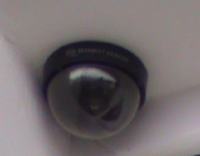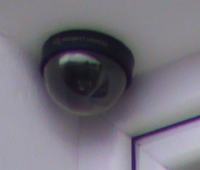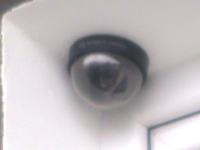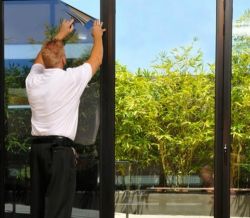FAQ
TL;DR: 23 % of European households now operate private CCTV (Statista, 2022). "He breaks the law if he sees the inside of your apartment" [Elektroda, rokycky, post #9670283] Polish law lets you demand privacy masking or complain to the district office before resorting to technical counter-measures.
Why it matters: Knowing the legal and technical limits lets you protect your home without escalating neighbor conflicts.
Quick Facts
• GDPR fines for unlawful CCTV can reach €20 million or 4 % of annual turnover (GDPR Art. 83).
• Typical fixed-lens dome camera field-of-view: 70–110° [Hikvision DS-2CE56C0T, spec].
• IR illuminator, 21 LED, 20 m range costs ≈ 120 PLN [MDH-System product page].
• Light intensity falls by 75 % when distance doubles due to the inverse-square law (Halliday & Resnick, Physics).
• One-way mirror window film blocks 99 % UV and cuts visible light by ≈ 15 % [3M™ Mirror Film datasheet].
1. Is it legal for a neighbour’s camera to record the inside of my flat?
No. Polish and EU GDPR rules prohibit processing images from private spaces without consent; doing so violates the right to privacy and may incur fines or civil claims [Elektroda, rokycky, #9670283; GDPR Art. 6].
2. What should I do first if the neighbour ignores verbal requests?
Send a written demand for masking your windows and cite GDPR Art. 15. If ignored, file a complaint with the district (gmina) office or UODO; most cases resolve after official notice [Elektroda, adamjur1, post #9670706]
3. How do privacy-mask zones work?
Many DVRs let you paint black rectangles over parts of the scene; the recorder stores only masked video. Ask the owner to enable a mask over your windows—30 seconds of setup, zero image loss for their car [Elektroda, sebfire, post #9670518]
4. Will ordinary curtains or blinds stop the camera?
Yes. Opaque curtains block visible and near-IR light, eliminating interior detail day and night [Elektroda, Marek31415, post #9670393]
5. Does an IR illuminator at 850 nm really blind CCTV?
Only at night and if its radiant power at the lens exceeds ambient light. At 10 m you’d need roughly 4 × the advertised 20 m, 21-LED unit because intensity drops with distance squared [MDH-System spec; Halliday & Resnick, Physics].
6. What LED power should I choose for 10 m distance?
A 3 W IR array (~2 000 mW/sr) covers 10 m for box or dome cameras with F1.6 lenses; smaller 0.5 W modules leave residual detail (Security Lighting Handbook).
7. Are laser pointers effective and safe for blinding?
Class 2–3 laser pointers create a bright streak but rarely saturate modern auto-iris sensors; mis-aim can damage eyes and is prosecutable under Art. 160 k.k. (endangerment) [Polish Criminal Code; Elektroda, tpl, #9671890].
8. Could I get sued for deliberately dazzling the camera?
Yes. Intentional interference may be considered property damage or obstruction of lawful monitoring, exposing you to civil claims if the camera helps investigate a later theft [Elektroda, adamjur1, post #9670706]
9. How can I tell if the camera is a dummy?
Look for power or network cables, night-time IR LED glow, and ask to view live footage; lack of wiring or access strongly suggests a dummy [Elektroda, scandaliks, post #9673449]
10. What if the owner shows only a wide shot that barely includes my windows?
Wide shots that do not resolve interior detail usually meet the ‘proportionality’ test under GDPR Recital 47; masking then becomes optional (EDPB Guidelines 3/2019).
11. Will mirrored window film help?
Yes. One-way mirror film reflects > 60 % of daylight, turning windows into a bright specular surface that overexposes most consumer CCTV sensors while keeping natural light indoors [3M™ Mirror Film datasheet; Elektroda, smiglo1999, #21480219].
12. Edge case: cameras with WDR or HDR sensors
Wide Dynamic Range cameras boost exposure in shadows and can partially defeat IR floods; expect residual outlines even with strong IR sources (Axis WDR Whitepaper).
13. How to formally complain in Poland?
- Gather evidence: photo of camera, distance, and refusal to mask.
- Submit complaint to the district office citing Art. 23 § 1 Kodeks Cywilny.
- If unresolved, escalate to UODO with documentation; average processing time is 60 days (UODO 2023 report).
14. Quick 3-step passive defence using mirror film
- Clean glass with isopropyl alcohol.
- Wet-apply self-adhesive UV mirror film, squeegee bubbles.
- Trim edges and cure 24 h. Result: daytime privacy, no legal risk [3M™ datasheet].
15. What if the neighbour re-points the camera later?
GDPR requires ‘data protection by design’; changing aim to invade privacy renews liability. Keep dated photos as proof for swift enforcement [GDPR Art. 25].
16. Will dazzling harm video of a future break-in?
Yes. If you overwhelm the sensor, footage of any incident may become unusable, undermining your own security or insurance claim [Elektroda, bhtom, post #9671865]






